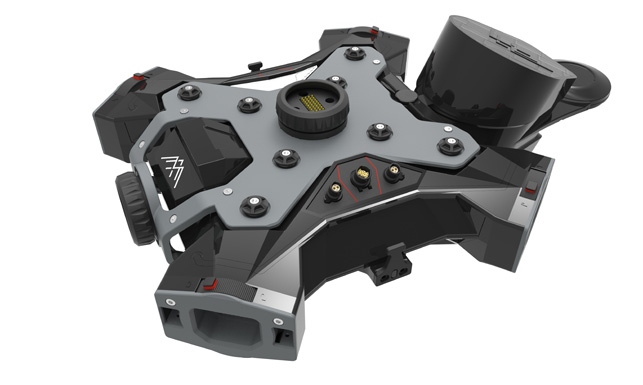When drone manufacturer Hexadrone wanted to prototype its Tundra-M, it turned to CRP Technology for its expertise and its Windform sintering materials
Hexadrone’s Tundra-M is designed for quick maintenance and flexible use in the industrial world
Developed by Hexadrone, a longstanding supplier of drones to the European market, in partnership with additive manufacturing specialist CRP Technology, the Tundra-M is the first mass produced product that Hexadrone has developed under its own name.
It’s a multi-functional drone for the professional and industrial market, featuring a waterproof and rugged design, with four quick-release arms as well as three accessory connections (for cameras and so on), so that individual users can adapt it to their own requirements.
As Hexadrone CEO Alexandre Labesse says, “We have engineered our drone by means of a cautious, multifaceted and collaborative approach, with the involvement of broadbased stakeholders. In the course of two years of consulting, research and development, we have gathered all the advice and customer testimonials useful to its design [to help us] us in the process of devising an ideal UAV solution.”
Hexadrone moved to selective laser sintering (SLS) technology with the help of CRP Technology in order to accelerate iteration cycles, improve manufacturing times and facilitate series production.
“The Windform SLS technology allowed us to easily prototype key components of our product, to outcompete the plastic injection moulding process in terms of deadlines and cost, and to test our prototype in real-life conditions with almost the same mechanical characteristics,” says Labesse.
“This 3D printing time/cost-saving technology has helped us a lot and now allows us to calmly approach the mass production phase”.
Body frame: The body frame of the Tundra-M is composed of the main frame plus a removable top lid. This component contains the drone’s ‘brain’, including main circuit boards, the cooling system, two batteries and an emergency parachute. “To devise this component, we were in need of a water-resistant, durable and sturdy material,” says Hexadrone CEO Alexandre Labesse.
For this, the team selected Windform SP for its mechanical and thermal properties. Windform SP is a carbon fibre-reinforced composite polyamide with excellent thermal, shock resistance and impact strength.
Arms: These are composed of motor supports, with removable arms, with an interlocking base that allows the user to easily tighten the four arms with the support of a specially designed ‘tension ring’, for which Hexadrone has applied for a patent.
Labesse says: “Our patented technology offers a reliable and sturdy connection, while being a waterproof solution in case of inclemency. This interlocking connection is also able to handle the stress due to leverage forces. These leverage forces are primarily generated through the components at the end applying a constant force through masses.” To help with the required stiffness, the carbon fibre-reinforced, nylon-based Windform XT 2.0 was used.
Article from Develop3D 3rd July 2018



